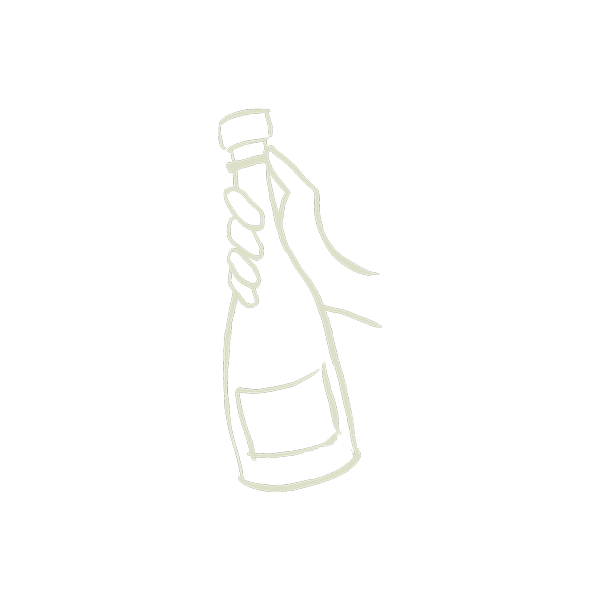History of the Dry Champagne Style
The dry style of Champagne is more popular then ever. In an age of information, folks like to know everything about the food and drink they consume, especially when it comes to their health. Here at fatcork, the bubbles we bring in are all dry because it's what's in demand. Our bubbles are so lovely and balanced without a ton of additional sugars.
What makes Champagne dry?
The final addition to a bottle of bubbles in the winemaking process is the dosage—a combination of reserve wine and sugary syrup. Dosage is meant to balance the perception of acidity and also determines the cuvée style, which references the sugar content.
Brut is the umbrella term for all bubbles that have a dosage of 0 to 12 grams per liter of sugar. At the bone dry end of the spectrum is brut nature or “brut zero” at 0-3 g/l, for those who enjoy their bubbles pleasantly tart. Extra brut lands in the Goldilocks zone at 0-6 g/l. Not too tart, not too sweet, but just right. Lastly plain ol’ brut, cuvées that are anywhere from 0 to 12 g/l, typically tipping towards the higher end. Confused yet?
It’s all about marketing. Each vigneron has a choice of how they want their bubbles to be perceived. While they don’t want to dupe anyone, they do have the liberty to blur the lines without sharing the exact amount of residual sugar in a given bottle. And to be clear, all of fatcork's selections fall in the brut category.
Why drink dry?
In the early 19th century, Champagne was originally made with higher sugar content to hide flaws inherent in early wine-making practices. This resulted in a higher demand for demi-sec and sec styles, which have 17-50 g of residual sugar per liter (a huge difference, right?). It wasn’t until the mid 1800s, when winemaker, Perrier Jouët, began making what is now known as Brut Nature. At first, his efforts were poorly received, with many going as far as calling this style severe, or “brute.” Quite the burn.
Since then, winemakers have perfected the craft of making balanced wines without relying on added sugar to hide mistakes. This is one of the reasons fatcork’s cuvées all fall under the Brut spectrum. We appreciate our growers who make their Champagnes with terroir, purity, and transparency in mind.
While Brut Nature cuvées are still a small percentage of the larger market, drier styles, in general, are much more popular today. Not to mention, drier styles of Champs now have just a big a place at the table as their still wine counterparts.
But it’s not all just good wine making. Climate change has made the Champagne region progressively warmer, resulting in fruit that is naturally more balanced in acid and sugar. Vignerons are now free to use dosage more like salt and pepper rather than the main ingredient.
Pairing with low dosage bubbles:
We love dry Champagnes with leftover holiday chocolate (it’s the perfect contrast). Or lean into the health craze and pair it with a crisp salad, grilled chicken, flaky white fish or raw shellfish, like oysters. As always, these bottles go great with something crunchy and salty, like mixed nuts, potato chips, or popcorn.

Get poppin'!
Check out some of the finest dry Champagnes:
Vadin Plateau and Piollot make lots of super dry and nature cuvées.
Adrien Redon’s cuvées are all made with a modern touch - low to medium dosage, light, crisp, and easy drinking.
Or try our Au Natural gift set, the perfect choice for nature lovers.
Cheers to getting low with dosage.
Team fatcork!

